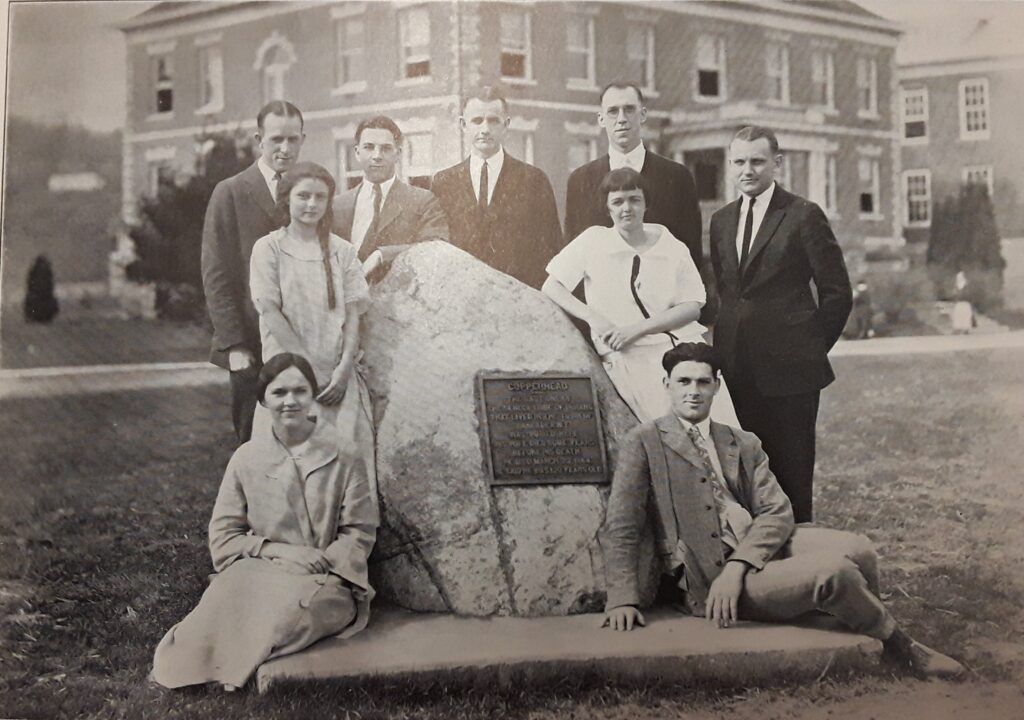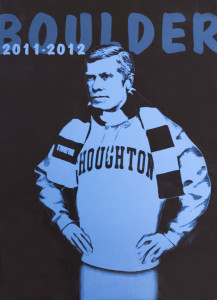The Boulder is back. A lot of students and newer professors may find themselves asking, What’s the Boulder? The Boulder is Houghton’s yearbook, which came out almost every year for nearly a century. In 2019, the book simply wasn’t finished.
This year, the Boulder is back on, and we, the yearbook staff, are very excited to announce that things are going well. Our yearbook has had a rough last few years, and it’s very odd being editor-in-chief of a yearbook that many students don’t even know exists. Often, I’ll say I’m on the yearbook staff, and I’m met with a blank look, and “We have a yearbook?” This makes sense, I suppose, given that my class (’21) is the only one left on campus that has had a yearbook while we’ve been students here.
However, the project has many supporters. “I’m really pleased to see the Boulder being revived again!” says library staff member Michael Green (’17). “The Houghton yearbook has had such a long history, and it’s great to know that tradition will continue. The 2020-21 book in particular will be a very valuable resource for future generations of students trying to find out what Houghton was like during this unique year. I know from creating my year’s book how monumental the task of putting everything together can be, so I’m really excited to see what this year’s staff comes up with.” Green was editor of the Boulder in 2017.
It’s worth noting that the yearbook’s name comes from the memorial boulder placed near the entrance to campus, across from Fancher and next to the Houghton sign. It stands to mark the grave of Copperhead, a Seneca man who returned to live in Houghton after his people were forced off the land. He died in 1864 after a tragic fire that burned his cabin down, and was buried in a spot of his choosing by the creek, on private land where the gazebo behind Gillette now stands. However, by the 1910’s, his grave was beginning to erode. Houghton students advocated in the Star for his remains to be moved up to campus and the new grave marked in a permanent way, so his body wouldn’t be washed away. His remains were reinterred in 1914; the boulder itself was placed the following year. [Editor’s note: this story was covered in even more depth in a column last spring. Check that out here!]
In 1924, the yearbook was founded, and The Boulder was chosen as its name. An announcement in the STAR that year reads, “The Boulder!” Doesn’t that sound solid? That is to be the name of our annual, and we propose to make it lasting, like the boulder which is one of the dear landmarks of Houghton.” The name commemorated both Copperhead and Henry R. Smith, Jr., a deceased professor of English literature, who had headed the project to reinter Copperhead’s body. The first volume of the Boulder is dedicated to him.

“We are dedicated to creating a yearbook that will creatively memorialize this strange year,” says Frances Mullen (’23). In her role as Design Editor, she created the new logo, and will be the primary force behind the book’s design and overall look. “I love photography and design because it is so soothing, and bad design/layout makes me crazy,” she says. Now a political science major, Mullen was part of an art and design program at her high school and so has a lot of experience in that department.
Business Manager Mary Vandenbosch (’23) got involved because she enjoyed yearbook in high school. She’s helping out with photography, but she is also the treasurer, the contact person for the printer, and will be the person in charge of selling the book once it’s been put together. “My role is to help promote the book to the Houghton community. I’m really excited for student engagement in this; it’s such a great historical record.”
A senior writing major with an intense interest in history, I started advocating for the yearbook’s return a year ago, when I discovered the 2019 volume was never finished. I was a volunteer in the college archives my sophomore year and a bit last fall, just before the former archivist, Laura Habecker, left for a job at the college archives of the New York State College of Ceramics, at Alfred University. She is now also the Town Historian of Caneadea. It was Laura who first told me about the yearbook’s abandonment, and encouraged me to bring it back to life. The yearbooks are a rich record of Houghton history we didn’t want to see go.
Supporting Boulder staff include Elise Koelbl (’22), and Vanessa Bray (’21). Both writing majors, Koelbl is taking pictures for the book, and Bray, who originally volunteered to help write captions and event descriptions, is currently helping schedule photography appointments with faculty and staff. Anyone who would like to support the yearbook staff, primarily in the area of photography and assisting with layout, can still reach out. Vandenbosch adds, “The Boulder is a great opportunity for students to get involved, and we would love to see you join us.”
What do you think of The Boulder’s return? Excited? Still puzzled? Comment below or get in touch with us via Instagram, Twitter, or email (editor@houghtonstar.com)!

